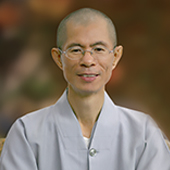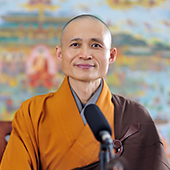“The Four Sights” - A Narrative about Shakyamuni Buddha’s Spiritual Journey
This story of Shakyamuni Buddha, known in the West as “The Four Sights,” describes the pivotal experiences that led Prince Siddhartha (who later became Shakyamuni Buddha) to renounce his royal life and become a monk. From a young age, Shakyamuni Buddha was inclined to meditate and contemplate the world, seeking to understand the deeper truths of the universe and human existence. He was never drawn to worldly pleasures and all sorts of pomp and pageantry.
As crown prince, Siddhartha's contemplative nature was a source of concern for his father, the king. While traditionally it is said that the king sought to shield the prince from the sufferings of the world, some accounts suggest he reluctantly allowed or even encouraged Siddhartha to explore life beyond the palace walls.
Prince Siddhartha embarked on his journey starting with the East Gate. There, he first saw a frail, scrawny old man whose life seemed as fragile as a candle in the wind, easily extinguished at any moment. This sight deeply saddened him, and he thought, “Alas! This is the fate that awaits us all.”
When he passed through the South Gate, he saw a sick man wailing on the ground in visible agony. The sight was deeply disturbing, and Shakyamuni Buddha sighed and thought, “It is inevitable that humans will fall ill. Is there no escape from the frailty of our bodies?”
At the West Gate, he witnessed a funeral procession with family and relatives weeping and wailing. He was overwhelmed by their grief, and it dawned on him that to be born is to die, and that separation in life and death is extremely sad and tragic.
At the North Gate, he saw a monk who appeared serene and at peace, radiating a sense of joy and equanimity. This sight deeply moved him.
Shakyamuni Buddha then pondered: Why must humans age, fall ill, and die? Is there a way to transcend these inevitable stages of life? How can one achieve inner peace and remain unaffected by one’s worries and woes, just like this monk?
These experiences prompted Shakyamuni Buddha to renounce his royal life, seek an understanding of the ultimate reality of all things and human existence, and attain Buddhahood. As a fully enlightened being, he possessed the “Three Bodies” (the Dharma Body, Reward Body and Transformation Body) ; and the “Four Wisdoms” (the Great Mirror Wisdom, Universal Wisdom, Wonderful Observing Wisdom, and Perfecting Wisdom) ; the “Five Eyes” (the Physical Eye, Heavenly Eye, Wisdom Eye, Dharma Eye, and Buddha Eye) and the “Six Supranormal Powers”, (namely the power to be anywhere at will; to see anything anywhere; to hear any sound anywhere; to know the thoughts of other minds; to know past lives; and to eradicate illusions and earthly desires.) In addition, he could recite countless dharanis. In essence, the four sights encountered by Shakyamuni Buddha inspired him to proclaim Dharma to liberate all sentient beings.
Birth, aging, illness, and death are the inevitable stages of life. Whether rich or poor, wise or foolish, whether born in heavenly or human realms, or in the three wretched realms, all who live must die. No being escapes this fate. A verse says, “What has become of the mighty rulers and high officials of yesteryear? Their wives, children, wealth, and honors are now but dust in the wind.” When one draws one's final breath, all titles and fame become things of the past. It makes no difference whether one was an emperor, prime minister, or any person of rank. Everything that once belonged to them - spouse, children, property, whether movable or immovable - loses its meaning.
For Buddhist practitioners, the fundamental realization is that this world is characterized by suffering and impermanence, and that all things ultimately are ‘emptiness’, meaning they lack any intrinsic independent nature. With this understanding, one naturally turns to spiritual practice, in search of a true and eternal life.
How can we transcend aging, illness, and death, and free ourselves from sorrow and afflictions? This is precisely the purpose of the Amitabha-recitation practice. By reciting the name of Amitabha Buddha, our rebirth in the Land of Ultimate Bliss is assured. Once reborn there, we escape the samsara of the Three Domains and Six Realms, freeing ourselves from aging, illness, death, and all forms of suffering.
The Amitabha Sutra teaches that beings in the Land of Ultimate Bliss “suffer no pain but only enjoy pleasures of various kinds.” This means they are free from all physical and mental afflictions, experiencing only pure, boundless bliss. Consider our existence in this world. Our bodies are vessels of suffering, subject to the pain of hunger, thirst, cold, heat, aging, and illness. Our minds are plagued by constant judgments about right and wrong, obsessions with gains and losses, and the three poisons of greed, anger, and ignorance. This is the harsh reality of our Saha world.
In contrast, the Land of Ultimate Bliss transcends these limitations. There, beings have both body and mind, but they experience no aging, illness, death, sorrow, or pain.They possess eternal life and supernatural powers, and the ability to save other sentient beings. This state, free from the mental habits that cause suffering in our world, represents the highest goal we can aspire to.
(Translated by the Pure Land School Translation Team;
edited by Householder Fojin)
Guiding Principles
Faith in, and acceptance of, Amitabha’s deliverance
Single-minded recitation of Amitabha’s name
Aspiration to rebirth in Amitabha’s Pure Land
Comprehensive deliverance of all sentient beings


